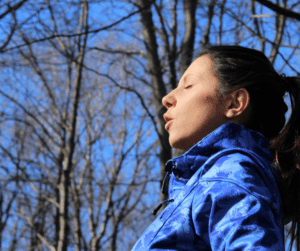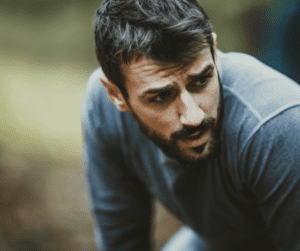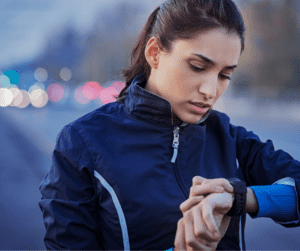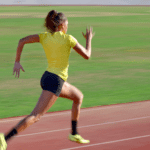We all have a lot to say about the year 2020, it’s crazy to think that Covid 19 came into our lives over 2 years ago already! What an absolute hurricane of chaos it has been…
New research reveals that there was a running boom during the pandemic. More than a fifth of all runners say that they run more often than they did previously as a result of Covid-19 and most in that group say they will continue to run more often once the pandemic is over.
Recent research by runrepeat.com also identified the growing popularity of running stating that 28.76% of runners started during the pandemic.
With more people taking up this beloved sport, we think this is an excellent opportunity to discuss everything you need to know about running with and after Covid 19.

Organs Most Affected By COVID‐19
We all have a pretty basic understanding that a virus infects your body by entering healthy cells. Once there, the invader virus creates copies of itself and multiplies, spreading throughout your body.
According to WebMD, the coronavirus latches its spiky surface proteins to receptors on healthy cells, especially those in your lungs. (The viral proteins bust into cells through ACE2 receptors.)
Once inside, the coronavirus hijacks healthy cells, takes command, and eventually kills some of those healthy cells.
The virus moves down your respiratory tract. (mouth, nose, throat & lungs)

COVID-19 is more likely to go deeper than viruses like the common cold. More than 8 in 10 cases are mild. But for some, the infection gets more severe.
Your lungs might become inflamed, making it tough for you to breathe. This can lead to pneumonia.
It is a disease that predominantly affects the lungs, but it can also harm other body organs, such as the kidneys, brain, and heart.
Organ damage may result in long-term health problems, long-term breathing problems, and heart complications.
The Amount Of Exercise You Should Be Getting During Self Isolation
While self-isolating You should still include some exercise in your daily routine. Being active and avoiding long periods of bed rest is important.
Exercising can help you to recover more quickly – both physically and mentally.
Exercise is medicine. If you have symptoms above the neck, things like runny nose, sneezing, of the common cold, such as nasal congestion or runny nose, or minor sore throat, you’re OK to exercise – BUT very easy,”
says Dr. Montero from Mayo Clinic.
If you have a fever; body aches; fatigue; or other symptoms, such as a stomachache or hacking cough, then it’s best to rest until you are symptom-free.
Note: Chat to a doctor if you have concerns or experience additional pain or symptoms when you exercise.
Don’t worry if it feels like you have less energy than usual. This is normal and may last for up to 6 to 8 weeks.
- Slowly build up back to running. Don’t try to jump in where you left off.
- Set yourself a realistic target each day
- Most importantly, rest when you feel tired
Let’s have a look at how Covid 19 affects your running…
Running & Covid 19

Common COVID-19 health problems that may affect how well you can run include:
- Breathlessness
- Phlegm – this can depend on how you were affected by the virus
- Extreme tiredness (fatigue) and a lack of energy
- Muscle weakness and joint stiffness
Should You Run If You Have COVID-19?
If runners are asymptomatic, they can run but should do so slowly and they should monitor their heart rate… we will get to this in more detail later in the article.
Interesting Facts About Running Heart Rate Post-Covid Or Vaccine: THIS Is What You HAVE To Know
Coming Back From a Long Layoff & COVID
You’re ready to start training properly again… post-Covid but aren’t sure what the best way to go about this is…
A study has been done at Pretoria University, that essentially talks you through certain symptoms, and what that means for your recovery.
It’s an amazing piece of research that can tell you if you had x symptoms, it should take you X amount of time before you consider vigorous exercise.
As a general principle, coming back from a long-term injury or long-term illness, we want to be as symptom-free as possible and restart.
That’s especially true of illness. So if you do get quite sick, you should aim to be certain that you are free of any overt symptoms and you want to just take a really slow systematic approach to build up again – on the Coach Parry platform, we make use of Dr. Phil Maffetone’s methodology in building up.
We start with a low volume and very low intensities, which are controlled by heart rate.
When people are recovering from illness, the heart is such a good way of seeing what’s happening inside of the body. So, if you limit your intensity to that heart rate, you are very unlikely to overdo it in the early stages, it will also control your intensity in such a way that it’s also very difficult to injure yourself.
The combination of using heart rate to hold you back, and just very systemically building up… these are based on Dr. Phil Maffetone’s MAF method – Maximum Aerobic Function.
The MAF method involves selecting a heart rate that we know is well below your threshold, then a week on week, very slowly building that up, and how slow and where you start will depend largely on just how much time you’ve spent out of the game.
If you’ve been very sick for a short amount of time, then this period will perhaps last two to four weeks, if you’ve been out of the game for a few months this will last you 6 to 12 weeks.
The key is patience and discipline.
Running & Covid 19 Summary
- There are no hard-and-fast rules or answers as to how long it will take to feel back to normal with your running after Covid.
- It is best to hold off until all symptoms have resolved, and this will take five to ten days for most individuals, depending on the severity of the illness.

- For runners who were asymptomatic with COVID, taking three days off of running is a good rule of thumb to ensure that symptoms do not develop over this period.
- It is ok to get back into running if you no longer have any severe fatigue, shortness of breath, or increased heart rate.
- The key is to take things slow and listen to your body.




Comments are closed.